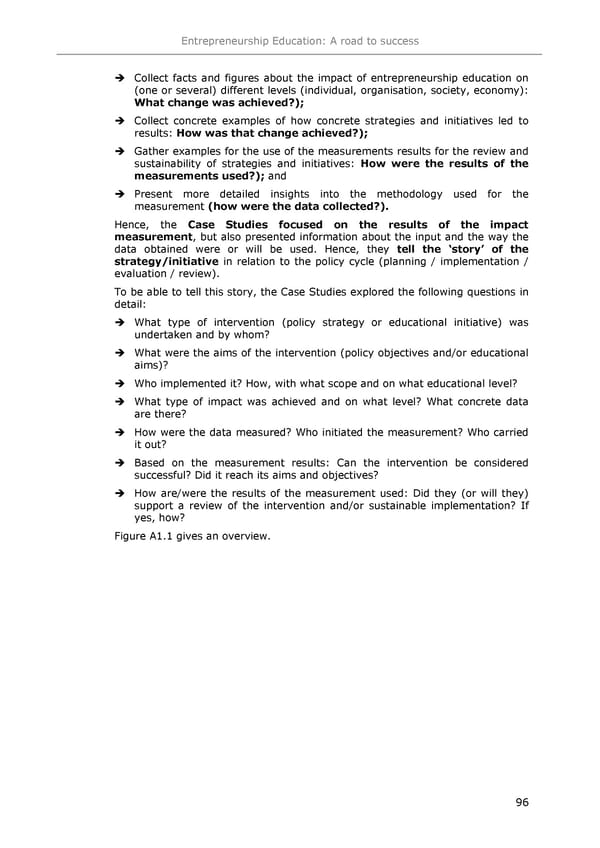Entrepreneurship Education: A road to success Collect facts and figures about the impact of entrepreneurship education on (one or several) different levels (individual, organisation, society, economy): What change was achieved?); Collect concrete examples of how concrete strategies and initiatives led to results: How was that change achieved?); Gather examples for the use of the measurements results for the review and sustainability of strategies and initiatives: How were the results of the measurements used?); and Present more detailed insights into the methodology used for the measurement (how were the data collected?). Hence, the Case Studies focused on the results of the impact measurement, but also presented information about the input and the way the data obtained were or will be used. Hence, they tell the 8story9 of the strategy/initiative in relation to the policy cycle (planning / implementation / evaluation / review). To be able to tell this story, the Case Studies explored the following questions in detail: What type of intervention (policy strategy or educational initiative) was undertaken and by whom? What were the aims of the intervention (policy objectives and/or educational aims)? Who implemented it? How, with what scope and on what educational level? What type of impact was achieved and on what level? What concrete data are there? How were the data measured? Who initiated the measurement? Who carried it out? Based on the measurement results: Can the intervention be considered successful? Did it reach its aims and objectives? How are/were the results of the measurement used: Did they (or will they) support a review of the intervention and/or sustainable implementation? If yes, how? Figure A1.1 gives an overview. 96
 Entrepreneurship Education Page 99 Page 101
Entrepreneurship Education Page 99 Page 101